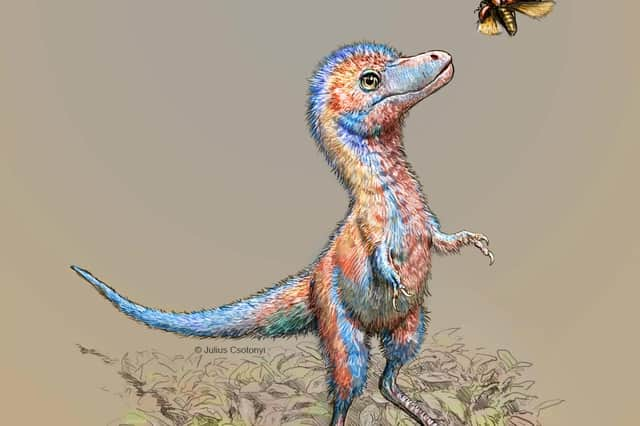Edinburgh University experts discover baby tyrannosaurs were size of Border collies


After studying the first-known fossils of tyrannosaur embryos, unearthed in Canada and the United States, researchers have discovered more about the early development of the colossal animals, which lived 70 million years ago and could grow to 40 feet in length and weigh eight tonnes.
A team of palaeontologists examined the fossilised remains of a tiny jaw bone and claw.
Advertisement
Hide AdAdvertisement
Hide AdProducing 3D scans of the delicate fragments revealed they belonged to baby tyrannosaurs – cousins of T Rex – which, based on the size of the fossils, were around three feet long when they hatched.
The team’s findings suggest that tyrannosaur eggs – remains of which have never been found – were around 17 inches long.
The researchers say this could help efforts to recognise such eggs in the future and gain greater insights into the nesting habits of tyrannosaurs.
The analysis also revealed that the three-centimetre-long jaw bone possessed distinctive tyrannosaur features, including a pronounced chin, indicating that these physical traits were present before the animals hatched.
Advertisement
Hide AdAdvertisement
Hide AdUp until now, little has been known about the earliest developmental stages of tyrannosaurs despite them being one of the most-studied dinosaur families. Most tyrannosaur fossils previously studied have been of adult or older juvenile animals.
Dr Greg Funston, of Edinburgh University’s School of GeoSciences, who led the study, said: “These bones are the first window into the early lives of tyrannosaurs and they teach us about the size and appearance of baby tyrannosaurs. We now know that they would have been the largest hatchlings to ever emerge from eggs, and they would have looked remarkably like their parents—both good signs for finding more material in the future. ”
The study, published in the Canadian Journal of Earth Sciences, was supported by the Royal Society, Natural Sciences and Engineering Research Council of Canada, and National Science Foundation. It also involved researchers from the Universities of Alberta and Calgary, Canada, and Montana State and Chapman Universities, US.
A message from the Editor:
Thank you for reading this article. We're more reliant on your support than ever as the shift in consumer habits brought about by coronavirus impacts our advertisers.
If you haven't already, please consider supporting our trusted, fact-checked journalism by taking out a digital subscription.
Comment Guidelines
National World encourages reader discussion on our stories. User feedback, insights and back-and-forth exchanges add a rich layer of context to reporting. Please review our Community Guidelines before commenting.